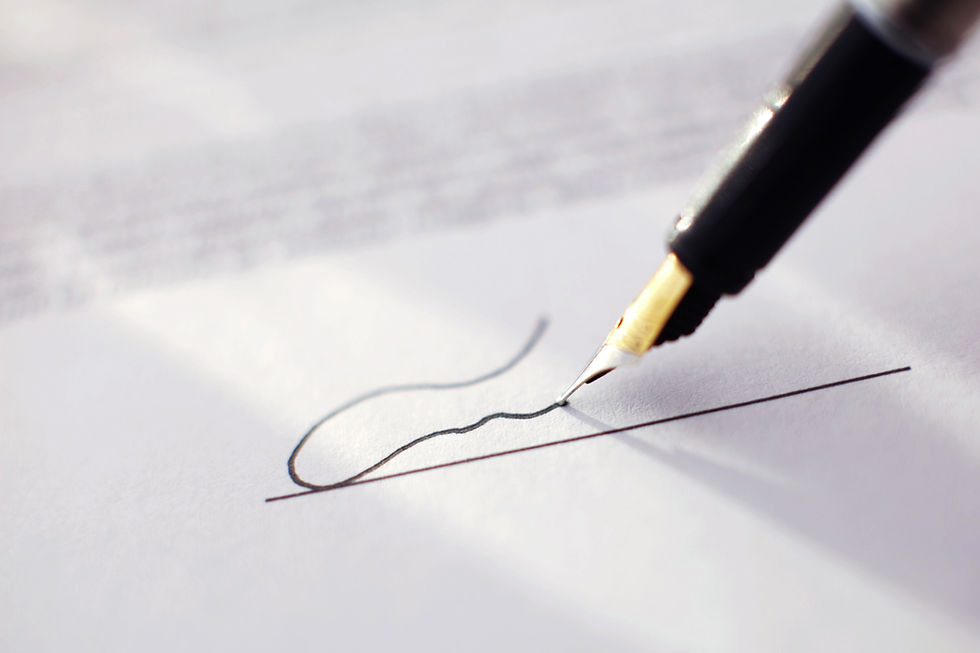What You Need to Know About the FAA Reauthorization Act

Image Credit: Wix Stock Library
For those unaware, the Federal Aviation Administration (or FAA) is an authority under the U.S. Department of Transportation. They were created over 60 years ago - originally under the name Federal Aviation Agency - through the Federal Aviation Act of 1958. Their major roles cover a wide range of responsibilities. Listed on their website, these roles include regulating civil aviation to promote safety, encouraging and developing civil aeronautics, regulating U.S. commercial space transportation, and more.
Late last year, the President signed the FAA Reauthorization Act of 2018, and it changed a few things. First and foremost, what does being reauthorized even mean? In bare basic terms, it means that their authority or effective legal power is being renewed, so this administration maintains its jurisdiction over civil aviation, aeronautics, etc. In this specific case, their authority has been renewed for the next five years. This may not seem like a long time relative to how long the FAA has been functioning, but according to the National Conference of State Legislatures's blog, the signing of the bill marked “the longest funding authorization period for FAA programs since 1982.”
Being categorized as Unmanned Aerial Vehicles (UAVs), drones fall under the jurisdiction of the FAA. Thus, changes to the FAA have an impact on drone laws and regulation. In this article, we’ll discuss some of the changes that come with the FAA being reauthorized, specifically those that pertain to drones.

Image Credit: Wix Stock Library
Possibly the most impactful changes under the Act are the new conditions for recreational drone use. The FAA reauthorization act “immediately repeals” the Special Rule for Model Aircraft (a.k.a. Special Rule 336 or Section 336), which prevented the FAA from regulating model aircraft that are flown recreationally, with Section 349. As long as they registered your aircraft and labeled them properly, recreational pilots were free to fly for fun without fear. Now, hobbyists are concerned about the implications of taking this Special Rule away. In particular, if the FAA were able to successfully integrate remote identification into drone regulation, hobbyists could be forced to buy costly add-ons such as transponders in order to be in compliance.
Furthermore, the Act requires that the FAA develop a rule regarding drone package delivery within one year of its enactment. This comes as no surprise as many companies have been trying to get drone delivery off the ground for a few years now. It’s exciting to think that someday soon our packages and take out orders may be delivered via drone, but not everyone thinks this is such a good idea. Some people are worried about the consequences of commercializing airspace to such a large extent.
Essentially, the changes in the reauthorization have brought to light the goals of the FAA, commercial pilots, and businesses with drones and how recreational users fit into this dynamic. Recreational flyers fear the financial costs and possible restrictions that could be a consequence of this repeal, so sites like getfpv.com and flitetest.com are urging others to fight to maintain Special Rule 336. You can read more about there stances in their articles Save the Special Rule for Model Aircraft – FAA Section 336 and Rule 336 - Take Action to Secure RC Flying.

Image Credit: Wix Stock Library
When the Act was signed, there was not an instantaneous change, but over the course of the next five years, these new terms and conditions might all be applied eventually. From the FAA website: “The agency is evaluating the impact of this change in the law and how implementation will proceed. The Reauthorization Act cannot be fully implemented immediately, please continue to follow all current policies and guidance with respect to recreational use of drones.” Of course, as is the case with any law, there is always the possibility that enough people will contest it that it could change.
How do you feel about these changes to the FAA? Do they make you excited or apprehensive about the future of drone legislation? Let us know what you think.

I am a writer and an artist based in Georgia. Specializing in illustration, graphic design, and video art, I love to explore the new ways technology intersects with art. I think drones have done amazing things for photography and video art, making what would previously be costly and difficult more accessible. As a complete novice, it was only recently that I saw what independent artists could do with their drones, and I continue to be impressed by the sights that drones are able to explore and the images they can capture. Instagram: @tyesha.ferron













